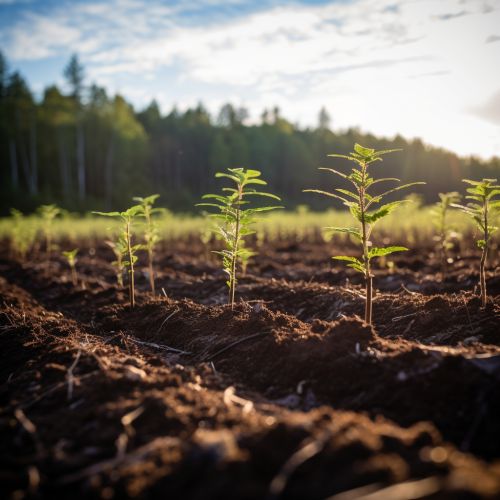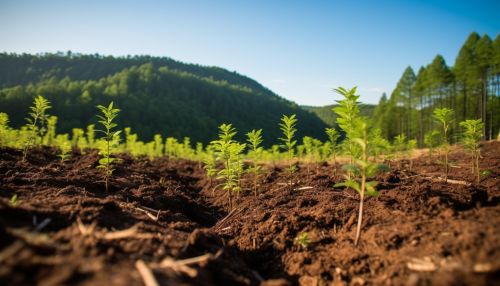Reforestation
Introduction
Reforestation is the process of restoring or creating forests, often in areas where they have been reduced by deforestation. Reforestation can be accomplished through natural processes (for example, natural seeding, coppice, or root suckers) or by human intervention and the planting of seeds or trees. This process is critical for the health of the planet, as forests play a key role in mitigating climate change by absorbing carbon dioxide.


Importance of Reforestation
Forests are vital to the planet's ecological health. They serve as habitats for a wide range of biodiversity, including many endangered species. Forests also play a crucial role in the global carbon cycle by absorbing carbon dioxide from the atmosphere and storing it in their biomass. This process, known as carbon sequestration, helps to mitigate the effects of climate change.
Forests also contribute to the water cycle by transpiring water into the atmosphere and helping to regulate the climate. They prevent soil erosion, improve water quality, and provide resources such as timber, non-timber forest products, and recreational opportunities.
Causes of Deforestation
Deforestation, the primary reason for reforestation efforts, is driven by various social, economic, and environmental factors. These include agricultural expansion, logging, infrastructure development, and mining. In many cases, deforestation is caused by the demand for agricultural land to grow crops such as soy, palm oil, and cattle ranching.
Reforestation Methods
There are several methods of reforestation, each with its advantages and disadvantages. These include natural regeneration, direct seeding, tree planting, and assisted natural regeneration.
Natural Regeneration
Natural regeneration involves the recovery of forests without human intervention. This method is often the most cost-effective and can lead to the development of forests with high levels of biodiversity. However, natural regeneration may be slow and is not always possible in areas with severe degradation or where non-native species have become established.
Direct Seeding
Direct seeding involves the sowing of tree seeds directly into the soil. This method can be less expensive than tree planting and may be more suitable for certain species. However, it requires a good understanding of the germination requirements of the species and may be less successful in areas with high levels of seed predation or where conditions are not suitable for seed germination.
Tree Planting
Tree planting involves the planting of tree seedlings grown in nurseries. This method allows for the selection of desired species and can result in faster establishment of the forest. However, it can be more expensive and labor-intensive than other methods.
Assisted Natural Regeneration
Assisted natural regeneration (ANR) involves the protection and nurturing of naturally regenerating tree seedlings. This method can be less expensive than tree planting and can result in forests with high levels of biodiversity. However, it requires a good understanding of the ecology of the area and the ability to protect and manage the regenerating forest.
Challenges in Reforestation
While reforestation is a critical tool in combating climate change and biodiversity loss, it is not without its challenges. These include the selection of appropriate species, ensuring the survival and growth of planted trees, dealing with pests and diseases, and managing conflicts with local communities and other land uses.
Success Stories
Despite these challenges, there have been many successful reforestation efforts around the world. For example, in Costa Rica, extensive reforestation efforts have resulted in a significant increase in forest cover. In China, the Grain for Green program has resulted in the planting of billions of trees.
